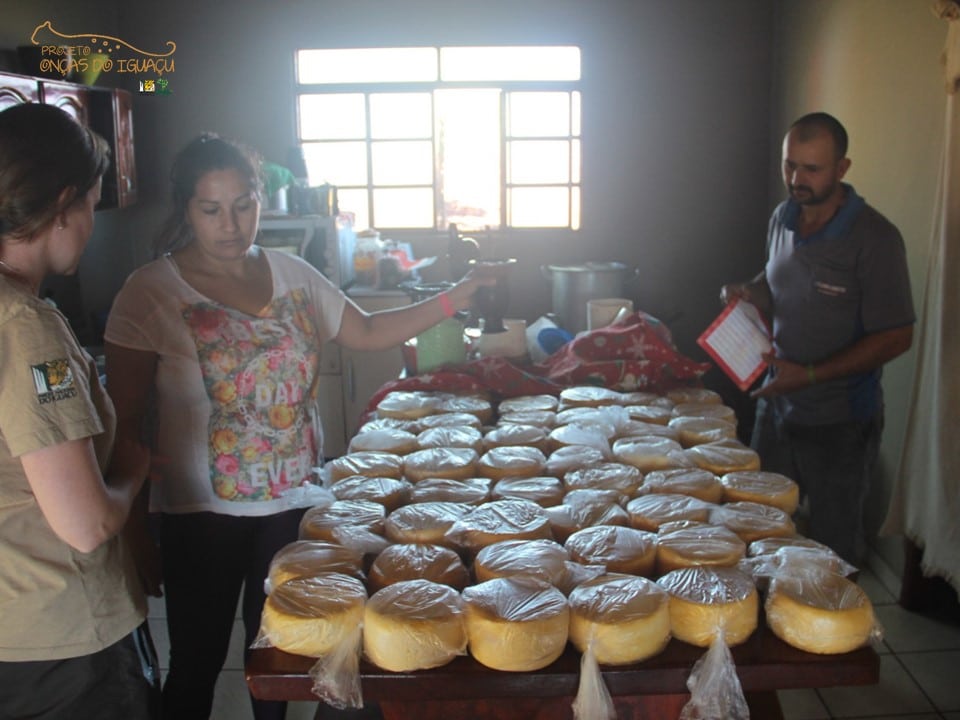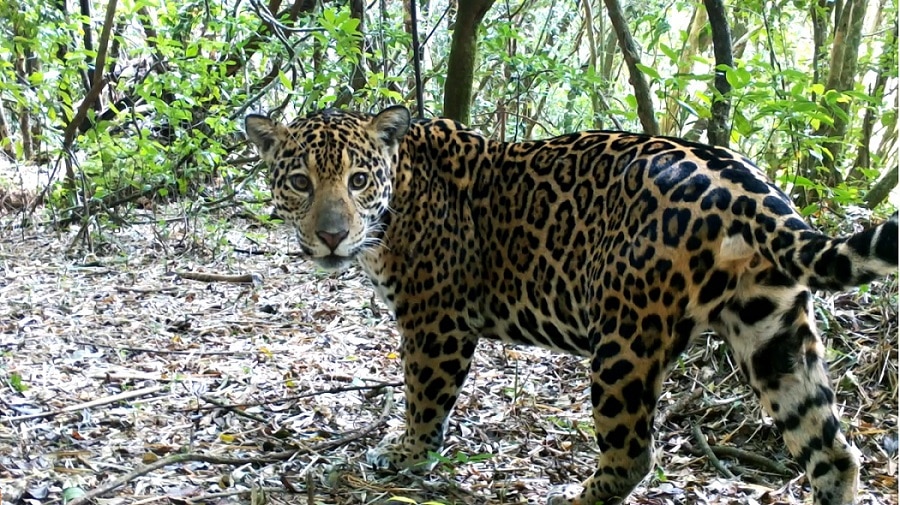Imagine an amazing waterfall that is considered one of the seven wonders of nature! Now place it in the middle of an incredible forest on the border of Brazil and Argentina and you have a glimpse of the Iguaçu National Park. In this amazing region, we have one of the most important jaguar populations of the Atlantic Forest. In the 90s this population was almost driven to extinction, with less than 11 individuals remaining and it was despairing! But since then the jaguars have been recovering.

The Iguaçu Falls. On the left of the river in Brazil, on the right, Argentina. Credit: Cataratas SA
The Projeto Onças do Iguaçu (Project Jaguars of Iguaçu), based in the National Park, has been working to increase the number of jaguars in the region. But how are we doing that? Of course, we do a lot of research but that is not enough! We believe that the first challenge is to replace their image of fear with enchantment! People will not help you save any species if they do not fall in love with them. We focus our communication on the magnificence of the jaguars and their importance in the environment. Replacing misconceptions with facts, we are able to change the “lens” that people look at the jaguars through. Fear out, enchantment in!
We are constantly visiting communities in the 14 municipalities surrounding the National Park (about 185,000 hectares) and developing activities with adults and children. This close contact generates confidence in the project and helps reduce the perceived risk. We work to promote coexistence between big cats and human beings (we also have cougars here), by helping them make necessary changes in their cattle management regimes to prevent predation, and by installing anti-predation devices, like blinking lights and electric fences.
We do not have funds to compensate for their cattle loss, so we have to be creative. We work with a different type of compensation: on each property that has had losses due to predation, we identify a talent that already exists there – something that people already know how to do very well, like crochet, cooking, nut production, and so on. Then we help develop this talent to produce a product to which the jaguars aggregate value.
One example is Marcos, a local small farmer in a city on the border of the National Park who had lost cattle to cougar predation. When we got there, we noticed that he and his wife produced cheese. So we asked them where they sold it? They produced just a few ones to sell locally. We branded their product as the ‘Jaguar Cheese’, made a lot of advertisements, found him clients in town, and boom: he became “Cougar’s Marcos”! He comes to town now and sells not only Jaguar Cheese, but also bread, honey, pickles, and many other products that they are now producing. Also, as his land is on the border of the National Park, he has made a small kiosk, Rancho Yaguareté (Jaguar Ranch), and is now selling food and drinks to bikers or tourists that pass by. He says he never imagined that a cougar could bring him so much happiness! This way, we have helped generate alternative sources of income for people, building support for the presence of jaguars and cougars.

Marcos and Susi, owners of a property where a cougar predated cattle, showing their production of the Jaguar Cheese. Credit: Projeto Onças do Iguaçu
In total, we have realised that people who live in exclusion (socially, economically, and culturally) are fed up with being invisible! When you get there and really see them and value their knowledge, they open up and you can together build a strategy to save the jaguars. We are not only interested in saving the jaguars, but also the people who share this land with them.
Every two years we do a census, together with Proyecto Yaguareté, in Argentina. It happens simultaneously in both countries. And with pleasure and absolute joy, we are observing the jaguar population increasing! From 11 jaguars in 2009, we now have the estimate of 28 jaguars inside the National Park. If we consider Brazil and Argentina together (the Green Corridor region), we now have about 105 animals while the whole Atlantic Forest has around 250-300 animals. This means that we have one-third of all the jaguars of the biome! And it is the only jaguar population in the Atlantic Forest that is rising. Isn’t this incredibly cool?
These numbers are from 2018, and we are now in the middle of the 2020 Census. Fingers crossed, we hope that the numbers have increased further. Since December 2019, 10 new jaguars have been registered by our camera traps, including cubs! We rejoice like kids that get ice-cream, every time a new jaguar appears on the cameras!
This world definitely needs more people that are #CrazyAboutJaguars, and we are working to get there!


